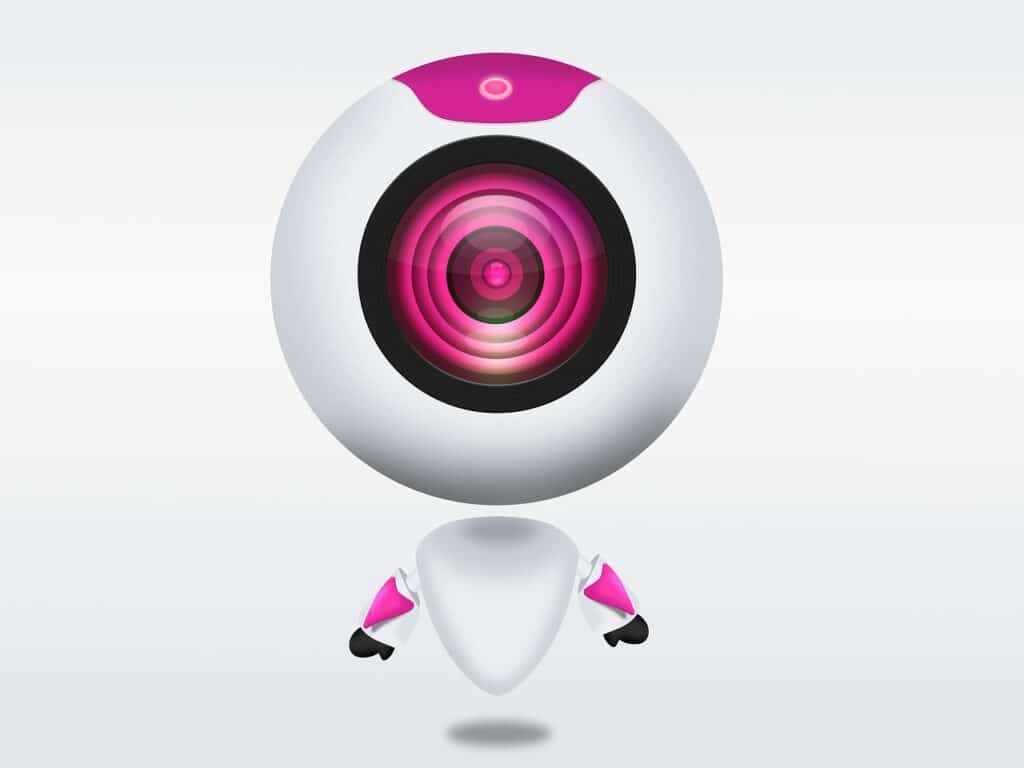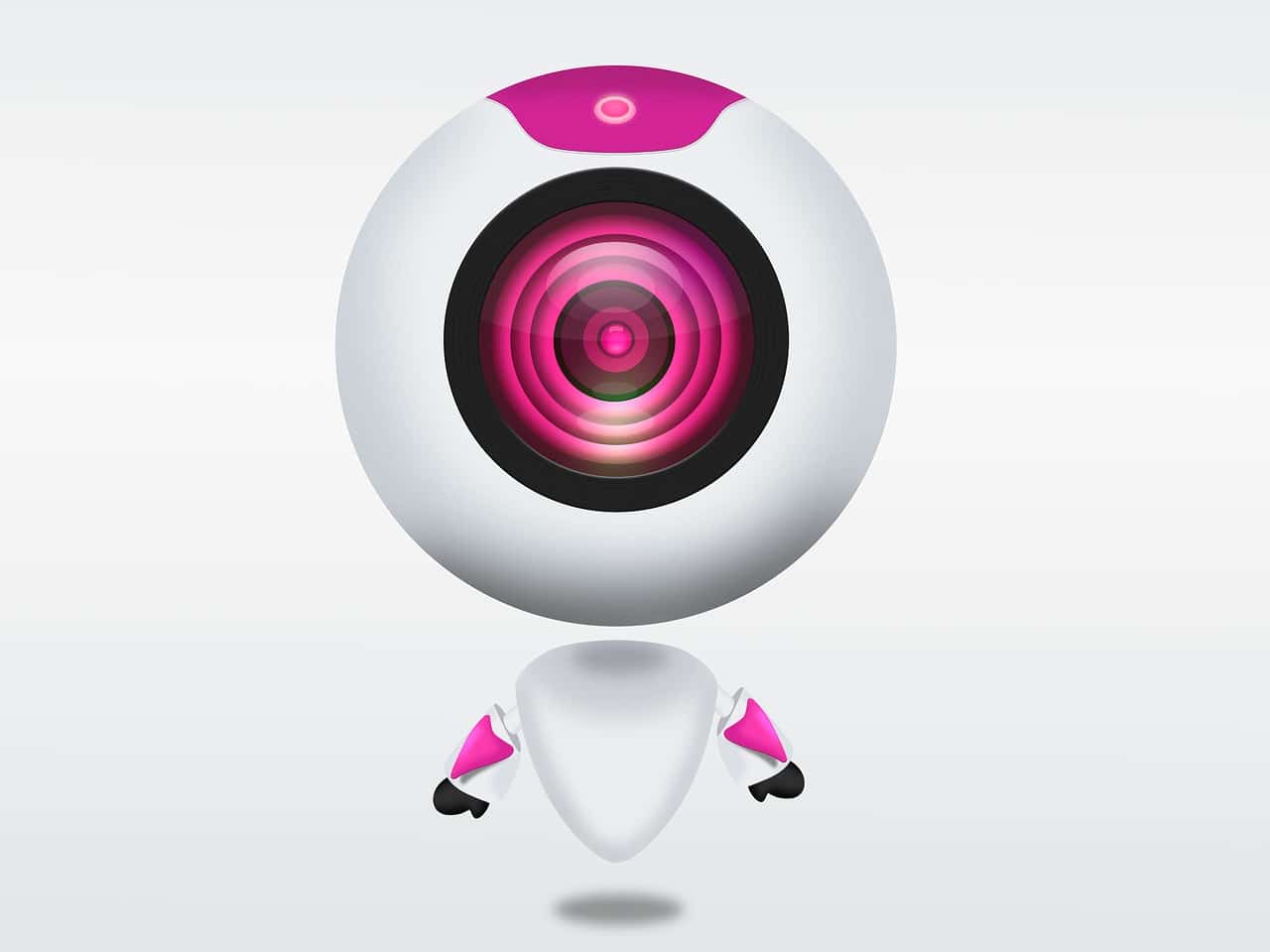Camera For Webcam
Are you looking for the perfect camera for your webcam setup? With so many options available, it can be difficult to know which cameras are best suited for streaming. In this blog post, we will provide you with all the tips and tricks you need when it comes to purchasing the right camera for your webcam. We will discuss how to choose the right camera resolution, the different types of cameras, how to set up your webcam for streaming, the best lighting for your webcam setup, and how to secure your camera for webcam usage. With this guide, you will have the perfect camera for your streaming needs in no time.
Table of contents
Choose the Right Camera for Webcam

There are many benefits to using a camera for webcam. Not only can it be an efficient way to communicate with friends and family, but it can also be used for work purposes. For example, you could use a camera for online video conferencing or online teaching. Below, we will outline the different types of cameras available and the tips that you need to take into account when choosing one.
Once you have identified the type of camera that you need, the next step is to search for a model that meets your needs. There are many different types of cameras available on the market today, so it can be difficult to choose the right one for your needs. Below, we have outlined some key factors that you should consider when choosing a camera: size, resolution, frame rate, features, and price. After these have been considered, we will provide some tips on how to set up and use a camera as a webcam.
Last but not least is how best to use your new camera! Following our best practices will ensure that your webcam footage is of high quality and provides you with all of the features that you need in order to make productive use of it. Finally, we’ll provide some advice on how to get the most out of using a webcam as part of your communication strategy.
Finding the Best Camera Resolution
When it comes to selecting the right camera for your needs, you need to be aware of a few things. First, there are different types of camera sensors and resolutions. Next, you need to take into account which factors affect resolution. Last, look for features that will help you take better photos and videos.
Once you know what to look for, it’s time to start choosing your camera! Here are some tips on how to choose the best resolution for your needs:.
– Look at the type of sensor – digital or optical? Digital cameras use sensors that capture images and video with pixels, while optical cameras use lenses and mirrors that convert an image into digital form. The quality of a digital camera will largely depend on its sensor resolution.
– Consider the size and shape of the sensor – do you want a compact camera or something larger? Compact cameras typically have lower resolutions because they’re designed for travel or snapshots rather than high-quality photography. Larger cameras tend to have higher resolutions because they can capture more detail in photos and videos.
– Think about how you’ll be using the camera – will you mostly be taking photos or shooting videos? Photos usually require lower resolutions while videos can benefit from higher resolutions if they’re shot in high definition (HD).
– Compare prices and features – not all high-resolution cameras are expensive. In fact, some good options can be found at budget prices as well. Additionally, many features – like WiFi connectivity – are included free with some high-resolution models.
Finally, it’s important to understand the difference between webcams and digital cameras when it comes to video quality. Webcams are typically used for video calls or live streaming while digital cameras are used for photo taking and recording videos/photos online.. Digital cameras with higher resolution often produce better video quality than webcams because their sensor captures more light and details than a webcam lens can manage alone.. But don’t worry if you only plan on using your webcam for basic tasks – most modern webcams offer acceptable video quality..
What are the Different Types of Cameras?
When it comes to taking pictures and videos, there are a lot of different options available. Whether you’re looking for a digital camera, a DSLR camera, a mirrorless camera, or even an action camera, there’s sure to be something that suits your needs. Below, we’ll take a look at some of the most popular types of cameras and explain what they offer.
Digital Cameras
Digital cameras are the simplest type of camera to use and can be used with just about any device. They typically have large sensors that make them good for capturing images and videos in high resolution. DSLR Cameras
DSLR cameras are similar in many ways to digital cameras, but they offer better image quality and more features than digital cameras. They’re typically used by photographers who want more control over their photos and videos. Mirrorless Cameras
Mirrorless cameras are smaller and more lightweight than DSLRs or conventional photography cameras. They lack the ability to use interchangeable lenses, but they offer great image quality thanks to their small sensors. Compact Cameras
Compact cameras are perfect for taking pictures on the go or if you want a less bulky option when photographing events or people. Action Cameras
Action cameras are often larger than compact cameras but have features that make them perfect for capturing exciting moments in detail (e.g., shooting slow motion footage). 360 Camera
360° photos and videos can be very immersive thanks to the way that they allow you to View all around your subject instead of just seeing them from one angle like traditional photography does. Point And Shoot Cameras
Point and shoot cameras don’t offer as much photo or video quality as some other types of camera do, but they’re great for taking pictures on short notice or if you just want something easy to use without all the bells and whistles.. Bridge Cameras
Bridge cameras connect between your phone or computer screen and an external lens so that you can take high-quality photos without having to carry around multiple equipment pieces.. Smartphone Cameras
Smartphone cameras don’t typically offer as good of picture quality as professional photography equipment does, but they’re perfect for snapping pics when you don’t have access to other equipment (e.g., during travel). Webcam Cameras
Webcam footage is often lower quality than other types of footage because webcams aren’t designed with photography in mind – however, they make up for it with their low price tag.. CCTV Cameras
CCTV (closed circuit television) systems capture images.
How to Set Up a Webcam for Streaming
Anyone who has ever used a webcam knows that streaming video can be a frustrating experience. Whether the camera is on your computer or in your living room, you’ll need to set up the right hardware and software in order to get the best quality stream possible. In this section, we will outline the steps necessary to set up a webcam for streaming.
Before getting started, it’s important to understand your device’s capabilities. Do you have an older computer that doesn’t have enough processing power to handle streaming video? Are you using a phone or tablet that doesn’t have a built-in camera? In these cases, it may be best to look for another solution – such as webcams that connect via USB or Bluetooth.
Next, it’s important to choose the right camera for streaming. Webcams come in different shapes and sizes, so it can be difficult to find one that will fit comfortably on your computer screen. If you’re using a webcam with audio capabilities, it’s important to make sure that the camera has good sound quality – otherwise viewers will likely hear muffled sound when you’re talking live on stream. To get great sound quality without having to spend lots of money on separate audio and video equipment, many people recommend selecting a digital webcam with HD recording capabilities.
Once you’ve selected your cameras and settings, it’s time to optimize your lighting setup for streaming purposes. Most people prefer natural lighting when streaming – but if you’re using an artificial light source (such as from a lamp), you’ll need to adjust settings so that the light is evenly dispersed across the camera lens instead of being focused in one area. Finally, position and mount your camera so that viewers can see as much of you as possible without obstruction from furniture or other objects in the room. And finally, connect hardware such as microphones and cords directly into your computer instead of relying on external devices (this will ensure better performance).
Once all of the hardware is connected and configured correctly, it’s time to install required software for broadcasting live content online. Popular software applications used for webcasting include OBS Studio (for Windows) or Xsplit Broadcaster (for Macs). Once installed, open these applications and click on Add New followed by Streaming Source. This will allow you not only to select which device should be used as your main streamer but also configure any additional settings like resolution or bitrate needed for optimal performance.. Lastly test everything by connecting live via Twitch or YouTube Live!
Choosing the Best Lighting for Your Webcam Setup
Camera for Webcam is a great tool for anyone who wants to capture their surroundings on video or photos. However, it can be difficult to get the best lighting for your webcam setup. This article will help you understand the different types of lighting, determine how many lights you need, and choose the right location and intensity of light for your setup.
First, it’s important to understand that there are three main types of lighting: direct light, indirect light, and ambient light. Direct light is the most natural type of lighting and is what you see when you look out a window or door. Indirect light comes from an artificial source such as a lamp or flash unit, and ambient light comes from everything around you – including the sun!
When choosing lights for your webcam setup, it’s important to take into account how many lights you need and where they should be positioned in relation to your webcam. You’ll want at least two lights – one directed towards your webcam and one scattered around the room – in order to get good footage without shadows or highlights appearing unnatural. It’s also helpful to use a light modifier like a softbox if possible so that shadows and highlights are rendered accurately.
To adjust the intensity of your camera’s lighting, use either manual or automatic settings depending on what type of environment you’re shooting in. For example, if you’re shooting in direct sunlight, turn down the intensity of yourlights so that they’re not too harsh on your eyes. If you’re shooting indoors with indirect lighting, then increase the intensity until the shadows and highlights look correct without being too bright or dark.
Lastly, always experiment with different types of lighting setups in order to find what works best for capturing video or photos that capture both the foreground (shadows) as well as the background (highlights). And don’t forget – if shooting outdoors with natural sunlight, try using color temperature (warmth/coolness) filters along with some reflective surfaces like windows to mimic real-life conditions!
Safely Securing Your Camera For Webcam Usage
Camera usage on the internet is growing by the day, and this trend is only going to continue. However, there are a few precautions that you should take before using your camera online. In this section, we will outline some of the key steps that you need to take in order to safely secure and use your webcam.
Before selecting any equipment, it’s important to think about what you need and what isn’t necessary. For example, do you really need a high-quality camera that can take great video or photos? Often times, less expensive options will suffice. Similarly, if you only plan on using your webcam for chatting or video calling with friends and family members, then a low-cost webcam will work just fine.
Once you have selected your equipment, it’s time to set up a secure environment for using your camera. This means creating a password for accessing your camera as well as encrypting any footage that is captured. You can also set up two-factor authentication in order to further protect yourself against unauthorized access.
Finally, it’s important to test out your camera functionality before taking any live footage or photos online. This way, you can ensure that everything is working as intended and no unexpected errors occur during transmission. Additionally, it’s always a good idea to review your privacy settings before streaming live footage in order to protect yourself from potential onlookers or hackers who may be watching remotely (or even peeking in on live events).
Steps to Secure Your Camera and Protect Your Privacy
It’s important to take note of the steps that you need to take in order to keep your camera safe and secure. By following these simple guidelines, you can ensure that your camera is protected from hackers and thieves.
First and foremost, it’s important to regularly update your software. By doing this, you’ll be up-to-date on the latest security patches and improvements. Additionally, make sure that you’re using strong passwords – even if your camera is connected to the internet, always use a strong password to protect yourself from identity theft.
Another important step is to disable remote access to your camera. This will help protect against unauthorized users being able to view or control your camera from a distance. Additionally, it’s always recommended that you use camera covers when not in use so that no one can see what you’re filming.
Finally, it’s important to pick a secure brand of camera when selecting one for yourself or for gifts. This will help minimize the chance of your footage being stolen or compromised in any way. It’s also a good idea to place cameras in private areas where they won’t be disturbed – such as inside a bedroom or bathroom – in order to increase their security. Lastly, be vigilant when installing third party apps on your device; sometimes these apps can require access to sensitive camera settings or data stored on the device itself. Always review all permissions before granting them access and be sure not store any sensitive data on the camera itself – instead store this information securely off-site!
In Short
When it comes to using a camera for webcams, there are several important factors to consider. You need to decide on the right camera for your needs, choose the best resolution, and find the best lighting for your setup. Additionally, you should ensure that you securely mount and protect your webcam from prying eyes. With these tips in mind, you can be sure that you have chosen the perfect webcam setup for streaming or recording videos.
Note: If you want to make some adjustments to the photo just let me know. I can do it for you at a very low cost. You can hire me to edit your photo
latest post
- Photo Editing Mistakes
 Excessive editing, Oversaturating colors, Blurred images, Too much HDR and Overdoing filters and effects are some of the top photo editing mistakes to avoid for crafting stunning pictures.
Excessive editing, Oversaturating colors, Blurred images, Too much HDR and Overdoing filters and effects are some of the top photo editing mistakes to avoid for crafting stunning pictures. - Best AI tools for lead generation
 Explore Customers.ai, Instantly, Seamless.AI, and LeadIQ are some of the best AI tools for lead generation as they provide you with client’s details for closing deals. Uncover its key features, affordable pricing, and customer reviews.
Explore Customers.ai, Instantly, Seamless.AI, and LeadIQ are some of the best AI tools for lead generation as they provide you with client’s details for closing deals. Uncover its key features, affordable pricing, and customer reviews. - Benefits of Digital Business Cards
 What is a digital business card? Discover the benefits of digital business cards and how to create digital business cards suitable to your professional image and networking efforts.
What is a digital business card? Discover the benefits of digital business cards and how to create digital business cards suitable to your professional image and networking efforts. - Best web design companies in Trivandrum
 Rainx LLP, Oregon Technologies, Redwet Solutions, and Globify Digital Solutions are among the best web designing company in Trivandrum, specializing in website development.
Rainx LLP, Oregon Technologies, Redwet Solutions, and Globify Digital Solutions are among the best web designing company in Trivandrum, specializing in website development. - Create a Digital Business Card
 Craft a digital business card that showcases your unique brand and personality. It’s simple to share and easy to update whenever needed. Plus, you’ll benefit from a free domain, hosting, and effortless social media integration. Ideal for professionals in any field!
Craft a digital business card that showcases your unique brand and personality. It’s simple to share and easy to update whenever needed. Plus, you’ll benefit from a free domain, hosting, and effortless social media integration. Ideal for professionals in any field!







